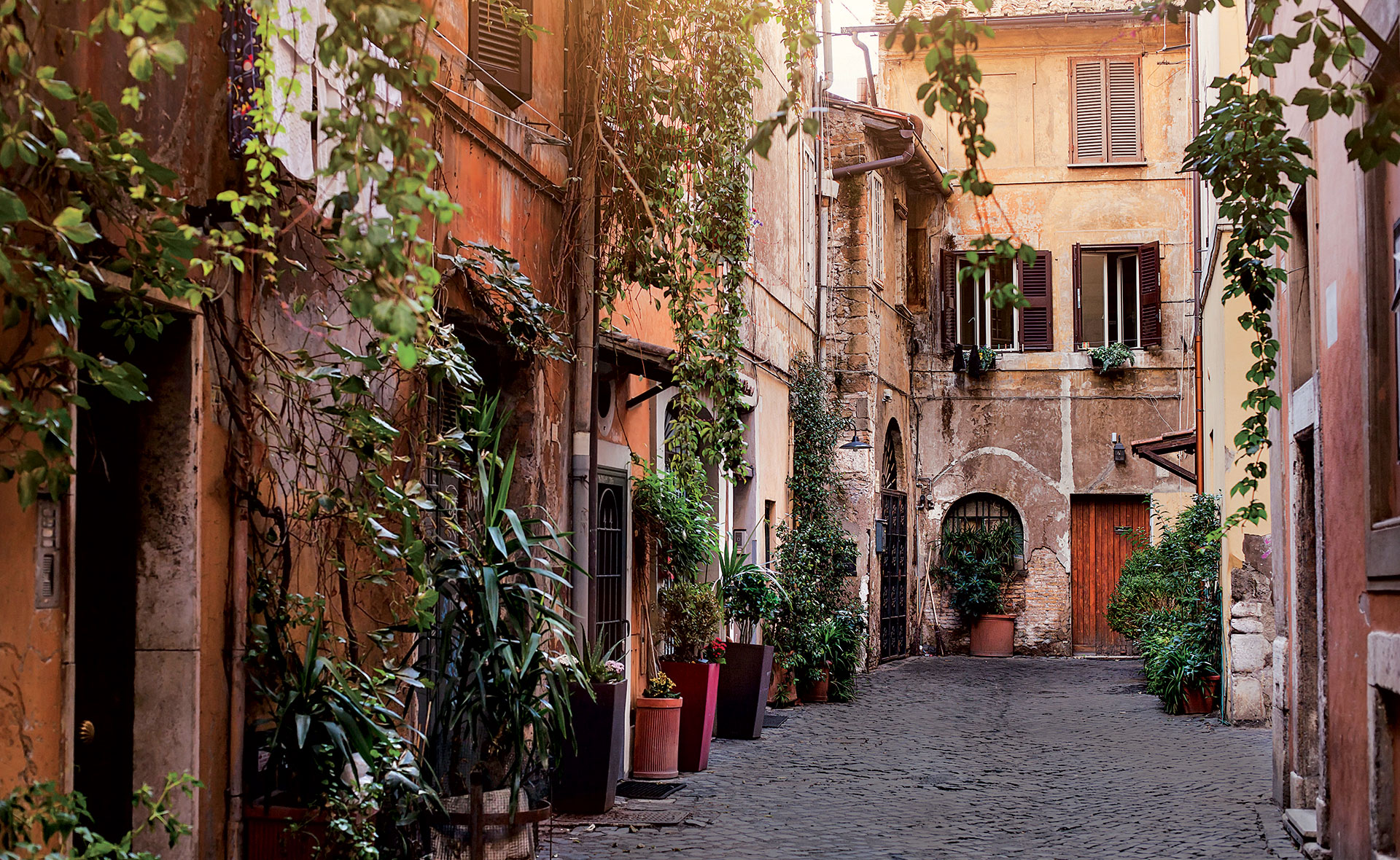A district with a unique atmosphere, where you can get lost among the old-style alleyways and lively nightlife.

A region of very ancient origin, built on what was considered the other side of the Tiber river relative to the heart of Imperial Rome, it was called “Trans Tiberim”, or “beyond the Tiber” in Latin, from the current name derives.
Our walk starts from Piazza Trilussa, which was previously known as “Piazza di Ponte Sisto” as it was dedicated to the poet Carlo Alberto Salustri (1871-1950), who was known as Trilussa. In the square, in addition to the seventeenth-century fountain commissioned by Pope Paul V Borghese, you can admire a bronze statue portraying the poet in the act of reciting verses from his poem.
Continuing through the narrow streets and enchanting little squares, you’ll come to the baroque Church of Santa Maria della Scala, in front of which stands a large eighteenth-century tower, which probably belonged to the powerful Stefaneschi family in the Middle Ages. Also in the square, don’t you can’t miss the Antica Spezieria di Santa Maria della Scala, the first pharmacy in the capital, which famously became the “Pharmacy of the Popes”. A short distance away, in Via della Lungara, is the charming Villa Farnesina, which was built in the early sixteenth century by the wealthy Sienese banker Agostino Chigi, and is now home to the Accademia Nazionale dei Lincei. An authentic Renaissance jewel, inside, the villa preserves the frescoes of artists including Raffaello, Sebastiano del Piombo, Baldassarre Peruzzi and Giovanni Antonio Bazzi, named the Sodoma.
Colourful streets lead us to the front of the Basilica di Santa Maria in Trastevere, which, according to tradition, was founded by Pope Callistus I in the 3rd century and rebuilt in the 12th century, during the papacy of Pope Innocent II. The ideal time to visit is at sunset, if you want to fully enjoy the playing lights offered by the thirteenth century mosaics that adorn its facade. At the centre of the square stands one of the oldest public fountains in Rome, which is supplied with Acqua Paola, the first documented restoration of which was carried out by Bramante. On Piazza Sidney Sonnino you can overlook the Basilica of San Crisogono, whose annexe has almost the same intact layout as the previous early Christian building. On crossing Viale Trastevere, you reach the less crowded part of the district, which is built around the Basilica di Santa Cecilia in Trastevere. Legend has it that the church was built on the family home of Cecilia, a Roman noble woman who converted to Christianity in 220 and was condemned to death. Inside, in addition to a ciborium made in 1293 by Arnolfo di Cambio, you can admire the statue of Stefano Maderno, which depicts the saint’s body, as miraculously found in 1599 by the cardinal nephew of Pope Gregory XIV. By passing along Via Anicia, you reach Piazza San Francesco d’Assisi. Here stands the Church of San Francesco a Ripa, which owes its name to its proximity to the surprising port of Ripa Grande. Inside the church, in the Altieri chapel, is one of the best masterpieces by Gian Lorenzo Bernini, the blessed Ludovica Albertoni.
Don’t leave out a trip to Tiber Island, the only urban island on the Tiber. According to legend, this island appears to have arisen from a pile of sheaves of wheat belonging to the Tarquins, which the Romans threw into the river during their expulsion from the city. The island, in the shape of a ship, hosted a temple in honour of Aesculapius, and an obelisk, like a ship’s mast. Nowadays, the Church of San Bartolomeo all’Isola stands on the ruins of the temple. From the island you can see a portion of the old Pons Aemilius, commonly referred to as the “Broken Bridge”, which emerges from the water.
